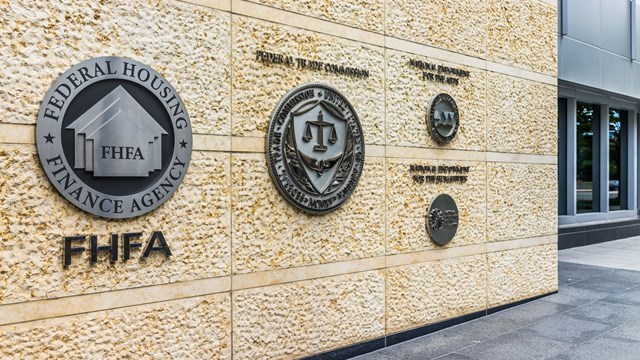
Running a co-op, condo or HOA is a business, and like most businesses, proper budgeting is the key to financial health. Just like businesses, associations usually have two separate yet vitally important budgets. The first budget is the day-to-day budget, also known as the operating budget, which encompasses, exactly as described, the everyday operating costs and expenditures such as salaries, taxes, utilities, insurance and maintenance items. The second budget is the long-term budget, known as the capital budget. This budget is more flexible and is devoted to the association’s long-term financial requirements, such as improving the buildings’ condition, major projects like redecorating or major improvements like a new boiler or elevator upgrade.
Planning each budget requires different considerations, information and research. The good news is that this is not, and should not be, a daunting task. All the information needed to prepare these budgets is readily available. All an association requires is planning, accurate budgeting and forecasting. If your association has these then there is no reason why both budgets cannot be sound and balanced.
Deficit, discretionary spending, revenue, surplus, and debt ceiling are words that seems to be on everyone’s lips these days. As costs of goods and services continues to rise it may appears as if families and businesses alike are approaching their own fiscal cliff. Like Congress, every association faces the same task of staring into the abyss and estimating costs and expenses for the future budget. So what exactly has to be done to accomplish this? There are some very helpful tips to accurately plan budgets and save money by just examining the day-to-day operating expenses, a little research to plan for the future and to looking for ways to cut costs.
Where to Start
According to Carl Cesarano, CPA of the Manhattan-based certified public accounting firm of Cesarano & Khan, PC, one good place to start is to “put together the budget team.” This usually consists of members of the board, the association’s treasurer, accountant, property manager, super and any other individuals with relevant expertise. One cost saving tip is to include any qualified residents. For example, instead of adding to the billable hours of the association’s accountant, consider soliciting the aid of a CPA that may reside in the building. Little ways to save money add up.
Associations and their budgeting teams have the daunting task of framing two budgets: the capital budget and the operating budget.
Capital budgets address the costs of long term but definitive items such as roofing projects, installing units with energy-efficient windows or upgrading the building's elevator. Capital budgets should span at least four to six years. Longer term budgets are unlikely to be reasonably accurate. No budget will be perfectly accurate (budgets within 15 percent of actual costs are acceptable), but it will help the board prioritize and build financial reserves (or plan borrowing) for major expenditures. Capital budgets should be reviewed and updated annually.
The priorities in the capital budget are ranked by making an existing conditions assessment or building survey, often also called a capital needs assessment. An architect or engineer can conduct this comprehensive building survey and make a capital budget. The survey will usually include an evaluation of building's exterior, (roof, windows, façade), mechanical systems (heating and plumbing), electrical distribution, and interior common spaces.
A good survey will also include an objective evaluation of input from residents, building staff, building management, vendors that provide building maintenance and possibly other specialist design professionals (architects or engineers).
Operational Costs
Operational budgets, however, consist of the more day-to-day expenses of utilities, general maintenance costs, monthly insurance payments, payroll and taxes. The key to creating a successful operating budget is in accurately predicting the amount of money needed for the upcoming year. According to Bruce Cholst, a partner at the Manhattan law firm of Rosen Livingston & Cholst LLP, this requires “intelligent guesswork.”
Cholst advises that one way to do this is, “look at prior expenses and use that as a framework. For example, take three years of legal costs, average those three years and that’s a good way to predict what you’ll possibly spend on attorney’s fees.” Cholst also recommends taking into account any capital projects or extenuating circumstances and add or subtract those numbers accordingly.
It is advised that that association boards start thinking about the next year’s budget in October. According to Jayson Prisand, CPA, a partner at the accounting firm of Prisand, Mellina, Unterlack & Company, LLP in Plainview says, “By October, you will have nine months’ worth of data and history so that you will be able to evaluate the prior year's budget forecast to actual, in terms of how accurately have you been budgeting or what unexpected items you incurred.”
The operating budget should be based on ordinary recurring types of transactions, Prisand says. These include utilities, payroll, monthly landscaping, just to name a few. “When you have one time non-recurring or extraordinary expense items, typically those are segregated into a separate category,” he explains.
Do Your Research
Cesarano also suggests another way to predict future costs is to keep abreast of “current economic and industry developments” and accumulate other relevant data. Look into “increases projected in taxes, increasing real estate assessments,” or upcoming changes in “fuel, utilities, supplies and contractor costs.” In many cases this information is easily accessible through your local government website or your utility suppliers’ webpage.
Additional methods, he notes, include obtaining fuel usage data for the previous two years and acquiring insurance cost projections from your broker.
Start Crunching the Numbers
Now that your team has the projected numbers, the next step is to make sure they are well inside your means. These days reducing costs may seem near impossible but all is not lost. According to Cesarano, “Operating costs reductions without compromising services is best accomplished by aggressively getting competitive quotes on an on-going basis for the goods and services needed to maintain the property.” Other experts like Stephen Beer of the Manhattan-based accounting firm Czarnowski & Beer have suggested that boards “look at expenses, such as repairs” to see if anything can be done in house. Coordinate with your property manager or maintenance team to see just how many projects they can handle instead of hiring outside contractors.
“Once the first draft is complete it is presented to the board for review,” says Stuart Mayer, a partner at the accounting firm of MayerMeinberg with offices in Syosset and New York City. “In certain circumstances, they ask the outside CPA to review the budget. This usually happens if the management company does not have a CFO or other qualified individual to prepare the budget. Also, if the property is self-managed more than likely they would look to the CPA to assist with the budget preparation,” he says.
Save for a Rainy Day
In addition to projecting everyday expenses of the budget, certain monies should be set aside for emergency costs. Sometimes this is too is hard to predict, but again, budget teams can learn from the past. For example, if a property is in a flood zone, try to quantify and project the cost of flood damage from previous flood events, says Cesarano, “These funds are held in a designated contingency fund. In the case of one property, the insurance company came up with an amount they felt was reasonable based upon their experience. However, it is very hard to project the disaster event you will get.” (Remember, everyone underestimated Sandy.)
Emergencies are bound to happen. Even though your boiler has been properly maintained, it suddenly breaks down in the middle of winter. “To pay for the repair, you use your building’s reserve fund, which is exactly what it sounds like, money reserved in case something goes wrong,” says Melissa Prandi, a California-based property manager and best-selling author. “Each month, part of the rent or the dues collected from tenants is designated to pump up the reserve fund to cover emergencies. How much money should be in the reserve is determined by a reserve study.”
How Much Should Be Set Aside?
How much should be in reserve? That is an age-old question. “As a rule of thumb we have always encouraged our clients maintain in reserves six months of maintenance or common charges. This is not an exact science and every property is different. Some clients keep more than this while other have far less,” explains Mayer.
“Since the main source of revenue in these communities is from the members who reside in the community, the two options to cover these unexpected costs are either to increase maintenance or charge an assessment. If every year a community charges an assessment to cover unexpected costs since they always do arise—this will be perceived as maintenance anyway to any prospective purchasers. This is why we encourage our clients to have small annual maintenance increases—as costs are always rising, and if there is a surplus, these funds can be contributed to the reserves.”
If your board is lucky enough to have a surplus from previous years, this usually goes into the reserve or contingency fund. According to Cesarano, “The organization typically retains excess operating funds, if any, at the end of the operating year, for use in future operating periods or transfers the surplus to reserves.” However, he adds, each building should review its bylaws and individual rules to determine how reserves are handled.
“Most budgetary issues are about reasonable guesswork and common sense,” Cholst notes. When boards take that approach, facing the yearly operational budget may not be such an abysmal task.
J.M. Wilson is a freelance writer and a frequent contributor to The Cooperator.






Leave a Comment